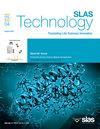Genetic diagnosis of peripheral blood interleukin-1 in premature infants based on bioinformatics and optical imaging
IF 2.5
4区 医学
Q3 BIOCHEMICAL RESEARCH METHODS
引用次数: 0
Abstract
Preterm labor is a severe health concern among expectant mothers, affecting approximately 5 % to 7 % of all pregnancies worldwide, and is associated with various factors, including genes, peripheral blood, and immunological functions. In our study, we examined the role of familial genetics in preterm labor to address knowledge gaps and provide more evidence on the concept. We searched the GEO database for applicable genes and found that the GSE26315 and GSE73685 series were relevant. We then performed an analysis using the GEO2R, GEPIA2, STRING, and KEGG enrichment pathways. Our findings are consistent with the literature regarding the association between preterm birth and familial genetics, peripheral blood, and interleukin-1. Interleukin-1 exploits immunological functions by inducing uterine inflammation, creating an unfavorable environment for fetal survival. Similarly, peripheral blood induces premature labor, with higher levels in the amniotic fluid indicating a higher rate of preterm birth. Inheritance of the familial genes responsible for preterm birth passes down the trait.
基于生物信息学和光学成像的早产儿外周血白细胞介素-1 基因诊断。
早产是一个严重影响准妈妈健康的问题,约占全球妊娠总数的 5% 到 7%,与基因、外周血和免疫功能等多种因素有关。在我们的研究中,我们探讨了家族遗传在早产中的作用,以填补知识空白并为这一概念提供更多证据。我们在 GEO 数据库中搜索了适用的基因,发现 GSE26315 和 GSE73685 系列与之相关。然后,我们使用 GEO2R、GEPIA2、STRING 和 KEGG 富集途径进行了分析。我们的研究结果与有关早产与家族遗传、外周血和白细胞介素-1之间关系的文献一致。白细胞介素-1通过诱导子宫炎症发挥免疫功能,为胎儿的生存创造不利环境。同样,外周血会诱发早产,羊水中的白细胞介素-1 含量越高,早产率越高。导致早产的家族基因会遗传给后代。
本文章由计算机程序翻译,如有差异,请以英文原文为准。
求助全文
约1分钟内获得全文
求助全文
来源期刊

SLAS Technology
Computer Science-Computer Science Applications
CiteScore
6.30
自引率
7.40%
发文量
47
审稿时长
106 days
期刊介绍:
SLAS Technology emphasizes scientific and technical advances that enable and improve life sciences research and development; drug-delivery; diagnostics; biomedical and molecular imaging; and personalized and precision medicine. This includes high-throughput and other laboratory automation technologies; micro/nanotechnologies; analytical, separation and quantitative techniques; synthetic chemistry and biology; informatics (data analysis, statistics, bio, genomic and chemoinformatics); and more.
 求助内容:
求助内容: 应助结果提醒方式:
应助结果提醒方式:


